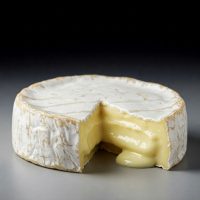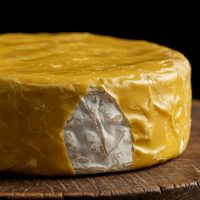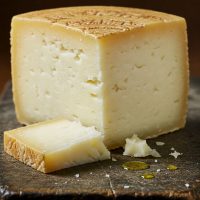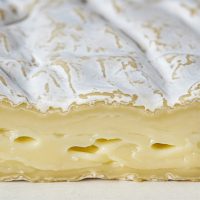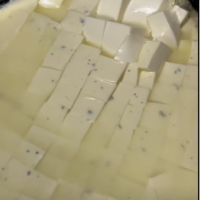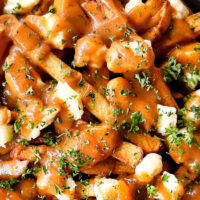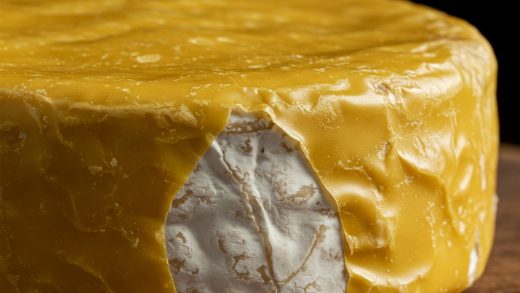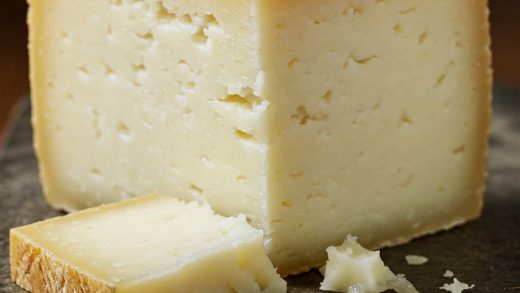Yes, the white part of Brie, known as the rind, is absolutely edible according to authentic sources like Wikipedia, Président Cheese, and Healthline.
Ever stood in front of a yummy cheese board, eyeing that soft, white-coated wedge of Brie, and wondered, “Hmm, should I eat that part?” You’re not alone! Brie cheese, with its signature velvety white outside, often leaves people scratching their heads.
So, let’s get straight to it: Yes, you absolutely can eat the white part, also known as the rind, of Brie.
In fact, for many cheese lovers, it’s a delightful part of the whole experience, adding a unique earthy or mushroomy flavor that complements the creamy inside.
Now, you might be thinking, “Wait a minute, is that mold?”
And you’d be right! The rind is a special kind of mold that’s totally safe and even helps the Brie develop its wonderful taste and texture as it ages.
Think of it like the crust on a loaf of bread – it protects what’s inside and gives it character. So next time you enjoy Brie, go ahead and savor the whole thing.
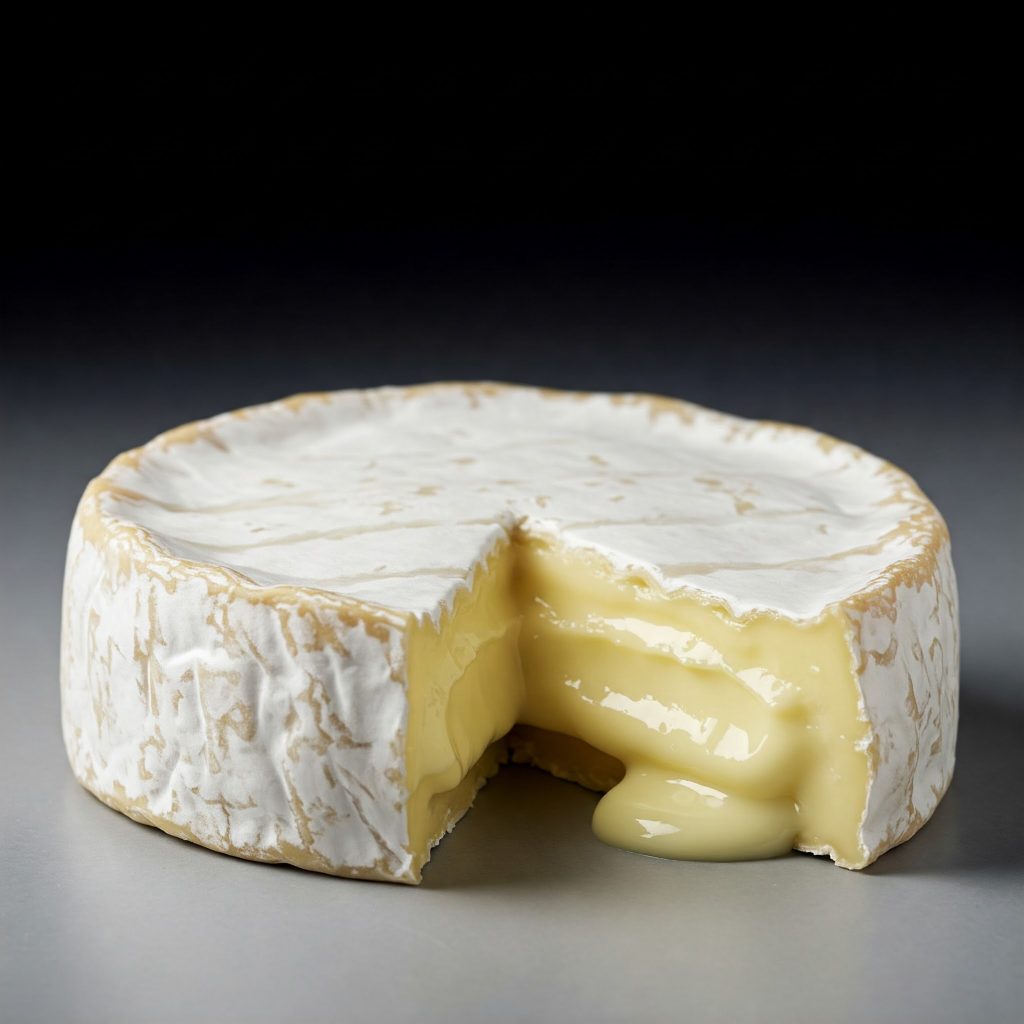
Can You Eat the White Part of Brie?
Yes, the white part on the outside of brie is called the rind, and it is absolutely edible.
Here’s what you should know about it:
What it is
The rind is a bloomy rind, which forms from the beneficial molds and bacteria that are used in the cheesemaking process. Specifically, it’s often the mold Penicillium candidum that creates the characteristic white, fuzzy exterior.
Why it’s there
The rind helps the cheese ripen from the outside in and also protects the interior from harmful bacteria.
Flavor and Texture
The rind has a subtle, earthy, and sometimes slightly mushroomy flavor that complements the creamy interior of the brie. The texture is usually firm but tender.
Eating it is common
Most people eat the rind along with the creamy inside of the brie. It’s considered part of the complete flavor and textural experience.
Personal preference
Ultimately, whether you eat the rind is a matter of personal taste.
If you don’t enjoy the flavor or texture of the rind, you can certainly cut it off and eat only the inside. However, you might be missing out on a component of the cheese’s intended flavor profile.
So, go ahead and enjoy the whole piece of brie, rind and all!
What is the White Part of Brie? (The Rind Explained)
That soft, snowy blanket that covers a wedge of Brie is called the rind. Think of it as a natural jacket for the creamy treasure inside.
This rind doesn’t just magically appear. It’s carefully grown by introducing friendly, helpful molds – usually Penicillium candidum or sometimes Penicillium glaucum – to the outside of the cheese during the cheesemaking process.
These molds are essential! They’re not the kind of mold that makes food go bad; instead, they’re specifically chosen and completely safe to eat. In fact, they’re key to making Brie taste and feel the way it does.
Beyond flavor, the rind acts like a shield, protecting the delicate cheese inside as it ages and develops its signature richness. It helps keep unwanted bad stuff out and allows the good flavors to mature beautifully.
Why You Should Eat the Brie Rind (Flavor and Texture)?
For many Brie enthusiasts, it’s a vital part of the tasting adventure. The rind often brings its own set of flavors to the party, frequently described as earthy, like fresh soil after rain, mushroomy, with a hint of the forest floor, or even slightly nutty.
This outer layer creates a wonderful harmony with the smooth, buttery heart of the Brie. It’s like a delicious contrast – the sometimes subtle, sometimes more pronounced flavor of the rind mingling with the rich creaminess within.
Texture-wise, the rind adds another layer of interest. It can be slightly firmer than the soft interior, providing a gentle chewiness that breaks up the melt-in-your-mouth quality of the Brie.
For many who truly appreciate Brie, eating the rind is simply part of the traditional way to enjoy this classic cheese, allowing you to experience its full complexity.
Are There Any Downsides or Exceptions?
Now, we know the word “mold” can sometimes raise eyebrows. But rest assured, the specific molds used to create Brie rinds are safe for us to eat. They are carefully controlled and are a far cry from the fuzzy green or black stuff you find on spoiled food.
That being said, taste is a very personal thing! Some folks might simply not enjoy the flavor or the slightly different texture that the rind offers. And that’s perfectly okay.
It’s also important to pay attention to the Brie itself. A fresh, high-quality Brie that has been stored properly will typically have a more enjoyable rind.
However, if the rind appears slimy, shows any discoloration like brown or green spots, or has a strong smell of ammonia, it’s best to avoid eating it, as these could be signs of spoilage.
Finally, it’s crucial to know the difference between a natural rind like Brie’s and artificial coatings. Some cheeses, like Gouda, have a wax coating that is definitely not meant to be eaten. Brie’s rind is a natural part of the cheese itself.
How to Best Enjoy Brie (with or without the Rind)
To truly appreciate Brie, whether you choose to eat the rind or not, serving it at room temperature is key. This allows the flavors and textures to fully develop.
When it comes to cutting Brie, especially a wheel, it’s often considered polite to cut wedges from the center outwards, ensuring everyone gets a bit of the creamy heart and the rind. If you’re dealing with a wedge, simply slice off what you’d like.
Brie is incredibly versatile! It’s wonderful served with simple bread or crackers, alongside sweet fruit like apples or grapes, or as a star in warm dishes like baked Brie.
If you happen to be someone who prefers to skip the rind, it’s perfectly acceptable to gently remove it on your own plate, especially when sharing with others. This way, everyone can enjoy the Brie in their preferred way.
Conclusion
So, there you have it! The white rind of Brie is not only edible but is generally a safe and flavorful part of this beloved cheese.
We encourage you to be a little adventurous and give the rind a try to truly experience the full spectrum of tastes and textures that Brie has to offer. Go ahead, take a bite and enjoy the wonderful world of Brie cheese!




